#India Consul General
Explore tagged Tumblr posts
Text
Dr. Sandeep Marwah Invited by Consulate General of India in New York

New York, 14th July 2024 – Dr. Sandeep Marwah, President of Marwah Studios and Chancellor of AAFT University, was recently invited to the Consulate General of India in New York. During the visit, he engaged in a meaningful dialogue with Binaya Srikanta Pradhan, Consul General, focusing on enhancing the cultural and artistic ties between India and the United States.
Expressing his patriotic sentiments, Dr. Marwah quoted the famous words, “Ask not what your country can do for you – ask what you can do for your country.” He elaborated on the various activities and initiatives undertaken by the International Chamber of Media and Entertainment Industry (ICMEI), offering the services of ICMEI to the Consulate General of India. Dr. Marwah emphasized the importance of proactive engagement in promoting India’s rich cultural heritage on a global platform.
The meeting was marked by a shared vision of raising the level of cultural and artistic exchanges between India and the USA. Dr. Marwah highlighted the pivotal role of the Indo-American Film and Cultural Forum, an initiative under ICMEI, in fostering closer cultural ties. He spoke about the Forum’s efforts in organizing film festivals, cultural events, and collaborative projects that bring together artists and filmmakers from both nations.
“The Indo-American Film and Cultural Forum has been instrumental in building bridges between our two great countries through art and culture,” Dr. Marwah stated. “We are committed to furthering these efforts and exploring new avenues to enhance our cultural collaboration.”
Consul General Binaya Srikanta Pradhan expressed his appreciation for Dr. Marwah’s contributions and shared several insightful ideas on strengthening the cultural relationship between India and the USA. He emphasized the significance of collaborative efforts in promoting mutual understanding and respect between the peoples of both countries.
Accompanying Dr. Marwah was Guru Dileep, a renowned yoga guru and member of the World Peace Development and Research Foundation. Guru Dileep’s presence underscored the holistic approach to cultural exchange, encompassing not only the arts but also wellness and spiritual traditions. He shared his thoughts on the growing global interest in yoga and how it serves as a bridge between different cultures.
“The synergy between art, culture, and wellness can play a crucial role in deepening the connections between India and the USA,” Guru Dileep noted. “Yoga, as an integral part of our heritage, can enhance this cultural dialogue.”
The meeting concluded with a mutual commitment to exploring new initiatives and projects that will further elevate the Indo-American cultural partnership. Dr. Marwah and Consul General Pradhan expressed optimism about the future of this collaboration, envisioning a vibrant cultural exchange that will benefit both nations.
#Dr. Sandeep Marwah Invited by Consulate General of India in New York#Dr. Sandeep Marwah President of AAFT
0 notes
Text
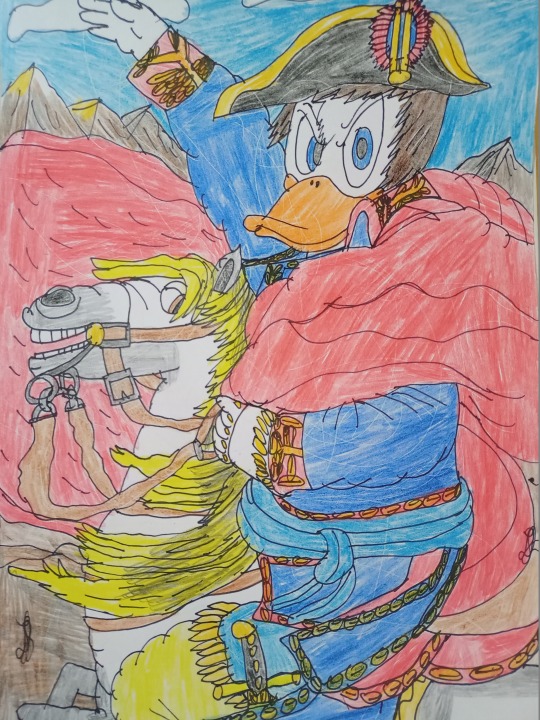
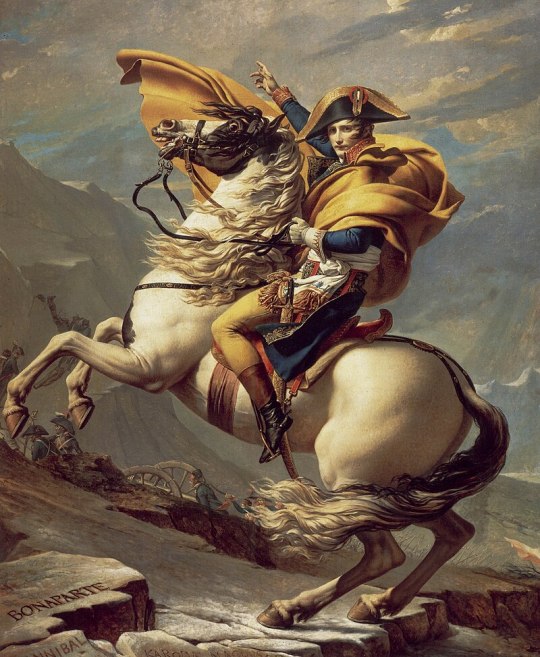
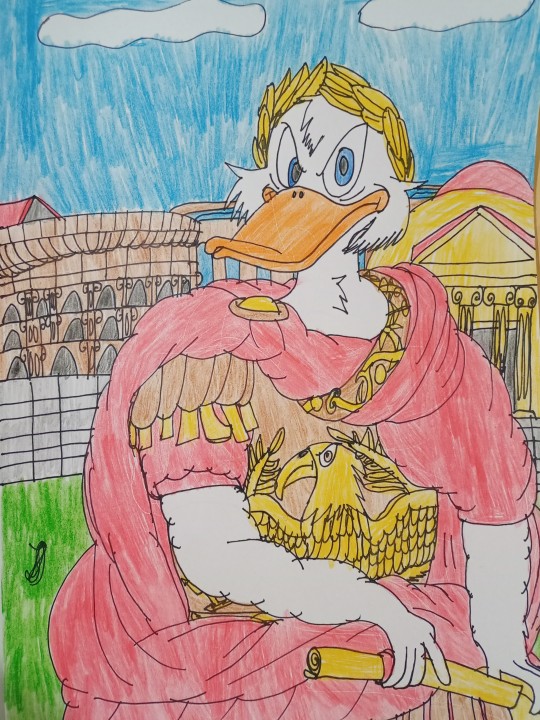
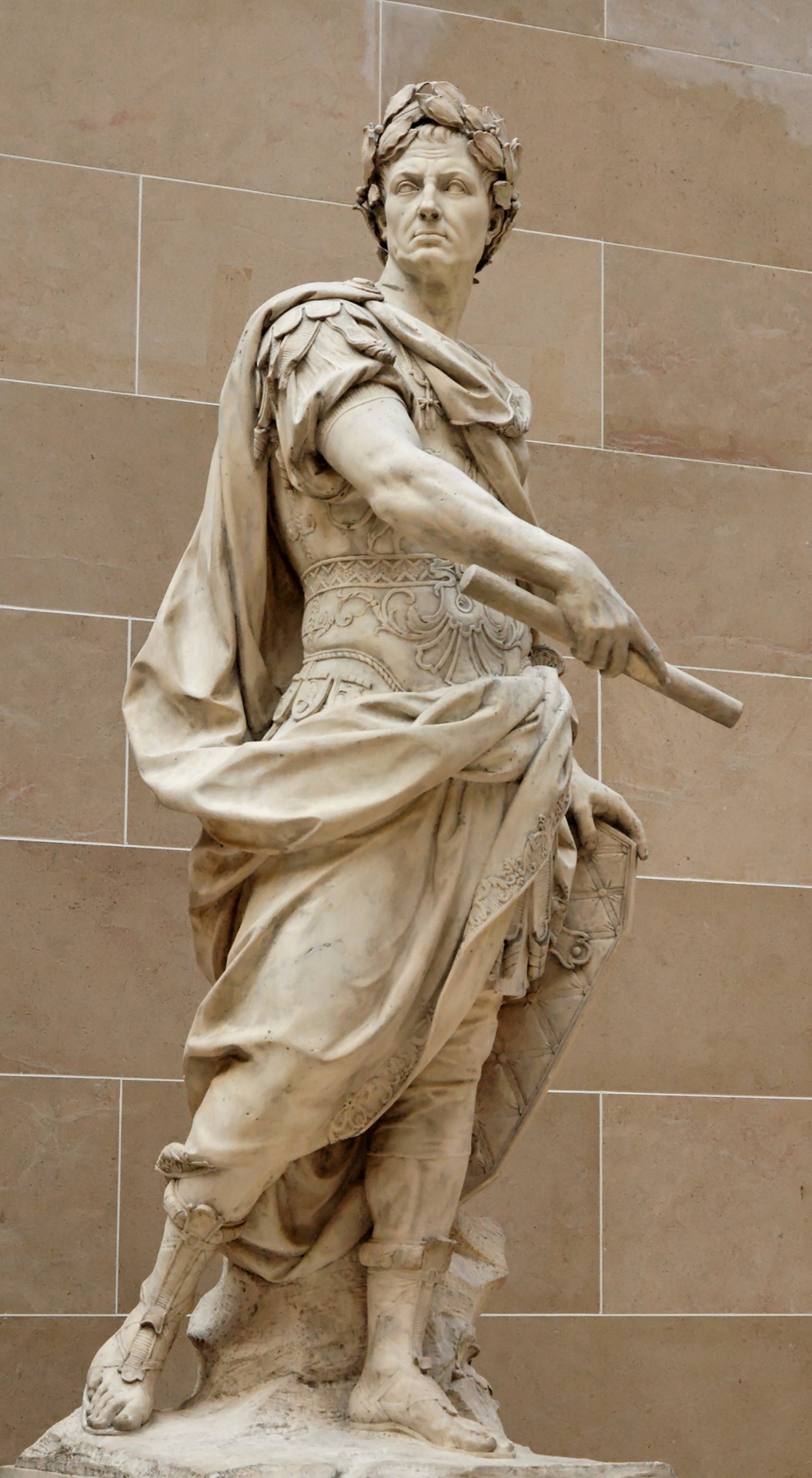
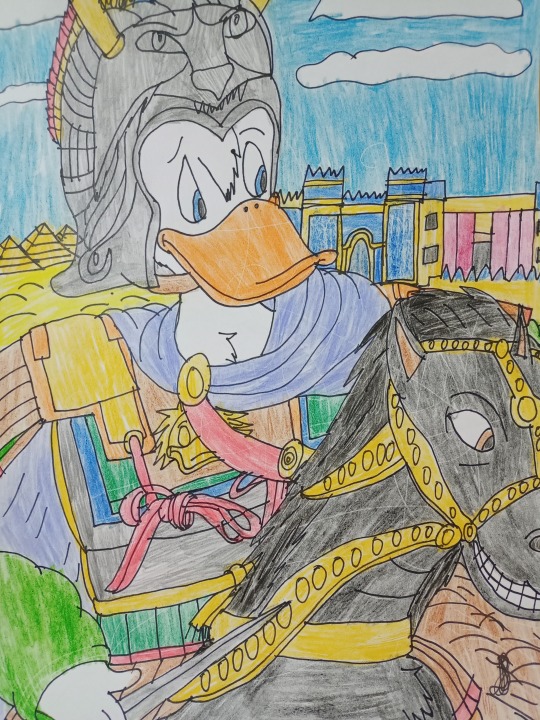
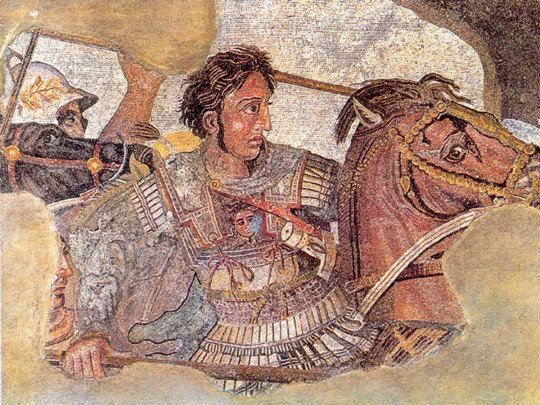
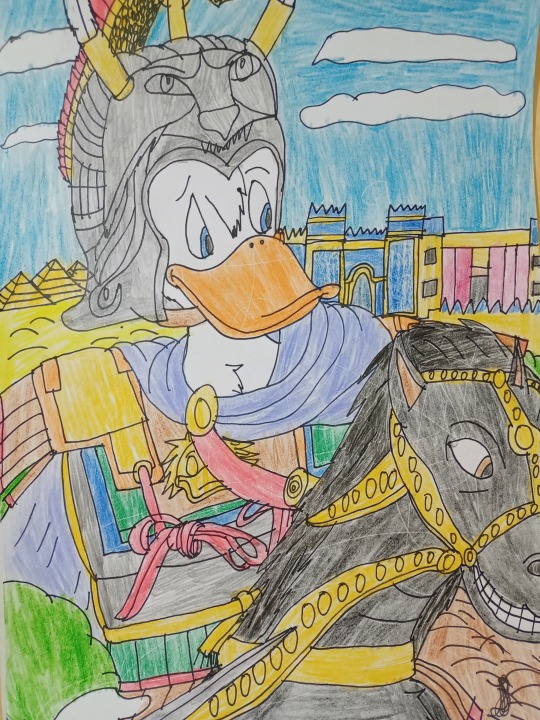
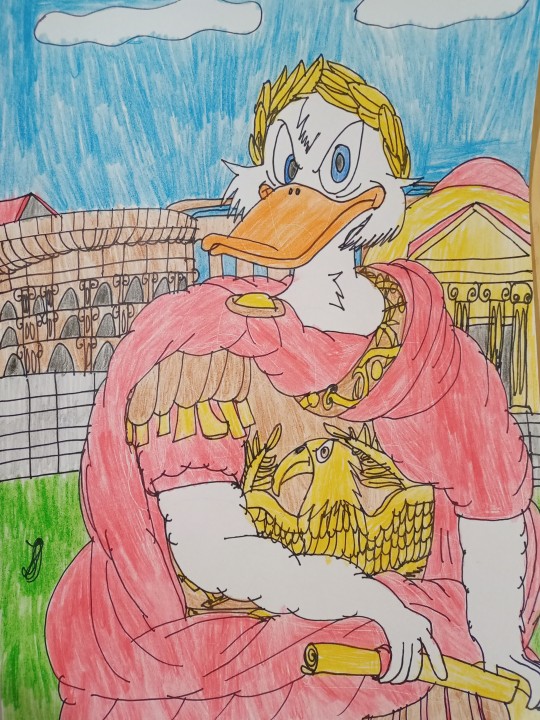
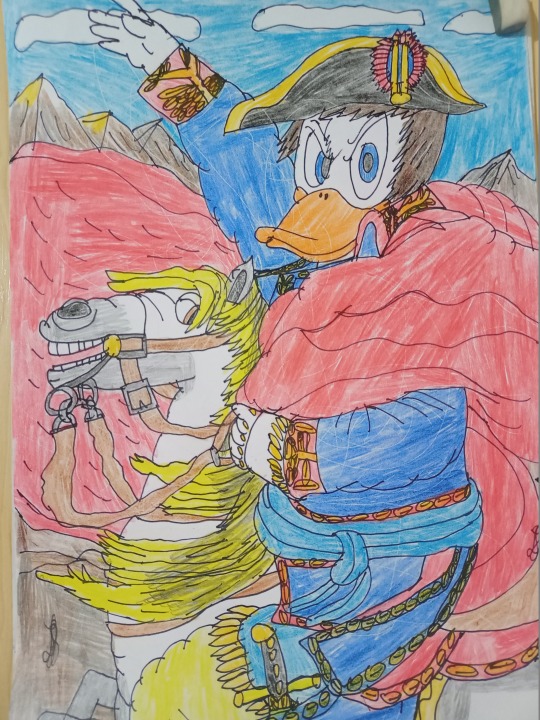
Donald Duck as Napoleon Bonaparte, Scrooge McDuck as Gaius Julius Caesar and Louie Duck (Quack Pack) as Alexander the Great - Conquerors - Real Ducks in History - History in Duckverse
I've always wanted to do a special project called Duckverse in History and my plan is to draw my favorite characters as redraws from famous works of art as well as famous historical figures. And since history is my favorite science, and my favorite field, I definitely wanted to do something related to it and related to one of my favorite historical characters. Since I don't want to complicate the situation, I will gradually publish a drawing related to that historical figure from time to time. I started this last year for Duckvember only to finish at the end of last month.
The first drawing is a redraw from Jacques Louis David's famous early 19th century artwork depicting Napoleon Bonaparte crossing the Alps in 1800 before the Battle of Marengo. Napoleon Bonaparte was the most famous French military leader, general, consul and emperor who waged war with all of Europe at the time and managed to subjugate it in its entirety except for the Ottoman Empire, Russia and Great Britain. He is from Corsica, but he left a lot for France and proved that France is not worth messing with easily. He also gave many reforms and his Civil Code which spread throughout Europe and brought order in France after the French Revolution. Napoleon's nature is very similar to Donald Duck and I drew Donald as Napoleon since he was created for that role and I drew him riding his horse Marengo in my own style, but in a realistic way and that Donald has five fingers.
The second drawing is a redraw of a statue made by Nicolas Coustou at the end of the 17th century for the decoration of Versailles, which depicts the greatest Roman, Gaius Julius Caesar. Although he was not an emperor, certainly many presented him, but he was a dictator, consul, general, writer, historian, engineer, constructor, and a great military leader who changed the Roman Republic into an almost Roman Empire. His fights against the Gauls, as well as the conflict with Pompey and his love with Cleopatra, are known, but he also changed a lot in Rome and was extremely rich. And he lived during the first century BC. That's why I drew Scrooge McDuck as Gaius Julius Caesar since Scrooge is a great leader and he also strived for fame and fortune and to be remembered in the future and he plays the role of the best Roman. Behind it are the Colosseum (built a century after him), the aqueduct (then irrigation) and the Pantheon (built two centuries after him), as well as a Roman temple that symbolizes Rome at that time, as well as the roads themselves. In addition, Topolino (Italian comics) are showed Scrooge as Caesar two or three times so that's where my inspiration came from.
The third drawing shows Louie Duck (the Quack Pack version, not the Ducktales reboot) shows Alexander the Great, another brilliant conqueror from the fourth century BC and I drew it as a redraw from the mosaic of Alexander the Great from the battle of Issus in which he confronts the Persian king Darius III from Pompeii, probably from the first century BC. Alexander the Great was the son of Philip II and the king of Macedonia who united Greece and fought against Persia and managed to conquer an entire empire in his twenties. He traveled through the Persian Empire and reached India and wanted to continue, but his soldiers did not want to continue, so he returned to Babylon, his new capital. He certainly changed the world at that time and introduced a new culture, called Hellenism, as a combination of ancient Greek culture and the culture of the Ancient East and ancient India. I drew Louie as Alexander because as a young man he is a great adventurer and rides his black horse Bucephalus and is eager for extremes, yet unlike Alexander, Louie shows a bit of his shyness, but is still brave enough to take on new challenges. I also added a helmet as worn by Alexander III in his time. Behind Louie are the pyramids from Egypt, the Ishtar Gate from Babylon and the imperial palace from Persepolis where the Persian rulers lived and it actually shows the lands that Alexander the Great conquered.
I certainly hope you like these drawings and these ideas and that these characters have such historical roles. Of course, Duckverse in history I combine mostly everything related to Duckverse (Donald Duck comics, OG Ducktales, Three Caballeros, Darkwing Duck and Quack Pack) and it's mostly my version and my idea. By all means if you like this and support these ideas, feel free to like and reblog this, but please don't use these same ideas without mentioning me and without my permission. Thank you!
#my fanarts#traditional art#artists on tumblr#donald duck#history#duckverse#ducktales#napoleon bonaparte#gaius julius caesar#alexander the great#scrooge mcduck#louie duck#quack pack#disney ducks#duckverse in history#disney duck comics#rome#france#topolino#greece#disney duckverse#quack pack au#art#my redraws#the conquerors#my fanart#comics#cartoons#my style#julius ceaser
36 notes
·
View notes
Note
Hello, I saw how you deal with sanghis especially regarding kashmir and I want to say that it's very admirable. I also saw your masterpost on information regarding kashmir and I found it very informative. It really saddens me how horribly kashmiris are treated by the Indian govt. and army and I truly hope kashmiris can one day get justice and liberation. I wanted to know more about what happened to kashmiri pandits(I couldn't access the Washington post article) and how sanghis use a tragic incident for propaganda because I am still a bit unaware regarding the issue. If you don't mind, could you provide more information.
the washington post article basically argues that the bjp uses the kashmiri pandit exodus to justify its violence against kashmiri muslims. india has illegally grabbed so much land from kashmiris. an indian consul general quite literally suggested building settlements in kashmir the way israel has in palestine (x). they've basically used this to justify the abrigation of article 370, strip kashmir of its autonomy and strengthen the military presence there. do keep in mind that india's claim of kashmir is not internationally recognised. un resolution 91 has called for the kashmir conflict to be resolved peacefully and democratically (which was blatantly disregarded when a370 was scrapped). kashmir is still recognised as a disputed region. it's all communalism
but really, it's no use pretending that you care when you've failed this community at every turn of the way. it's just hindutva pitting pandit and muslims against each other (you can also read this). for all their talk about how kashmir is such an integral part of india, they sure do love murdering kashmiris
#this is such a bad answer. i am so sorry but i do hope it helps#i have no idea why you're not able to access the washington post article cause it's not behind a paywall and i can still read it but oh well#also thank you for the nice words but it's really not that admirable the only reason i have this much audacity is because i'm a bitch#i just love complaining#asks#sasusakucore
23 notes
·
View notes
Photo




Part 1 in this series about... something. I’ll figure it out when I write more.
Howard Imbrey was a CIA agent. Having started in the CIA’s WW2 predecessor, the OSS, he was placed undercover in diplomatic roles at American consulates and embassies in Sri Lanka, India, and Ethiopia during the late 40s and 50s. This was a traditional role for intelligence agents: with diplomatic immunity, they would be safe from prosecution, while embassy parties and other events allowed them to pick up gossip from inside the country.
However, it did limit agents and paint a large target on their back. Imbrey operated in a friendly environment in India, where he could rely on British-trained police chiefs as informants in the battle against the Communist Party of India in Maharashtra and Kerala. In other parts of the world, governments would monitor the movements and activities of those who came out of the American embassy, knowing them to be spies.
In 1958, Imbrey was instead embedded in a fake corporation headquartered near the UN in NYC, with a real businessman as his partner. They worked closely with UN diplomats to find actual businesses to promote, to keep the whole thing legit. At the same time, it allowed Imbrey the chance to question the diplomats and businessmen for gossip and to meet with other informants the CIA had already cultivated across the continent. Some of these informants included Cyrille Adoula and Albert Kalonji, head of political parties and breakaway factions devoted to undermining Patrice Lumumba’s elected government in the Congo.
The article attached was important to developing his cover. Initially, it ran in Fortune, owned at the time by Henry Luce’s Time Inc., while the screenshots are from John H. Johnson’s Negro Digest. Luce was historically close to the CIA and the American government in general. He hired CIA agents onto his staff and allowed them to write propaganda as they saw fit. He directed his journalists to publish opinion pieces attacking those who exposed CIA secrets, like Ramparts magazine. At one point in the Congo Crisis, US Ambassador to Belgium William Burden, a friend of Luce’s, phoned him to get him to bury a story on Lumumba. No information has come out either way on just whether the journalist who wrote this article knew Imbrey was CIA or was simply ordered to by higher ups, but it seems likely that the editorial staff of Negro Digest simply saw it as fitting with their focus on black lives and reprinted it unwittingly to the CIA’s benefit. Later on, Imbrey would find another cover as a journalist with a CIA-controlled news outlet in Paris, Brussels, and Rome, which allowed the CIA to fly informants to him.
None of this was known to anyone until 2001, save for a brief acknowledgement of thanks to Imbrey’s wife in a book by Larry Devlin, CIA Station Chief in the Congo. That year, Imbrey suddenly gave two interviews in April and June, and then died a year later. One was to a high school student at a private Episcopal school in Maryland. It’s roughly written, and clearly transcribed by someone who’s writing the names of Congolese officials by ear rather than knowledge, but deserves to be read, not because Imbrey lets his guard down consciously, but rather because of the implicit biases he still has and the distinction between the secrets he wishes to keep and those he feels fine in revealing. Particularly humorous is when the kid tries to ask him about whether the CIA operated independently from the president, and Imbrey denies it, saying “That’s an Arab type of operation.”
The other was to Charles Stuart Kennedy, a career diplomat who retired in the 80s and subsequently made a post-retirement life of interviewing other diplomats for the public record. Since many CIA employees were embedded as diplomats, he ended up running into a bunch. His interview is much more detailed and professional, albeit with the same transcription errors on names, and makes for excellent reading for anybody who enjoys salacious historical gossip. Imbrey talks about reading Popeye the Sailor bootleg Rule 34 as a kid, kidnapping fishermen in the Indian Ocean with submarines to train them to use radios to spy on the Japanese Navy (sounds like UFO abductions), supplying porn to the higher ups in the Indian Navy, etc. But two particular moments stand out, one being what may be the single worst denial of American involvement in the assassination of Patrice Lumumba:
Q: Did you get involved at all with the Lumumba business?
IMBREY: No, the only thing I can tell you is they sent out this shellfish compound to chief of station Larry Devlin and he sent it back with an angry note saying, “Don't you know the Belgians are going to kill him, what do you want us to do?” We kept totally out of that one. Then Lumumba really put himself in terrible trouble when he gave a rise of one rank to everybody in the army and then found he couldn't pay the new prices. Then the army rebelled; they put him in an airplane, took him south and they pulled him out of the airplane on the driveway, brought him up to the chief of the Lunda tribe and in Munongo's office and I guess they shot him there or it may not have been there. In Munongo's office they began asking him a couple of questions. Well, this was according to his answers. Munongo took a bayonet and put it right into Lumumba's chest and Captain Gatt, a Belgian, was right there and he fired a bullet in the back of Lumumba's head to put him out of his misery and that was how it happened, but no Americans were involved.
and whatever this is, which happens to coincide with the CIA’s MHCHAOS operation on American soil:
Q: When you came home what were you doing?
IMBREY: That's where we turn off the tape recorder.
Q: All right, well then, we'll just skip over that. When did you take off again where we can talk?
IMBREY: Let's see. I was sent back to Rome in '72. Turn it off for a while and I'll tell you about it.
47 notes
·
View notes
Text
India has stopped issuing visas to Canadian citizens amid an escalating row over the killing of a Sikh separatist on Canadian soil.
India said the temporary move was due to "security threats" disrupting work at its missions in Canada.
Tensions flared this week after Prime Minister Justin Trudeau said India may have been behind the 18 June killing.
But Mr Trudeau said on Thursday he was not looking to provoke India with the allegation.
India has angrily rejected the allegation, calling it "absurd".
Speaking to reporters in New York, on the sidelines of the UN General Assembly, Mr Trudeau said: "There is no question that India is a country of growing importance and a country we need to continue to work with."
He said Canada was not looking to provoke India or cause problems with the allegation but is unequivocal about the importance of the rule of law and protecting Canadians.
Relations between the countries - key trade and security partners, and US allies - have been strained for months. Analysts say they are now at an all-time low.
India's government swiftly made clear the suspension of visa services also "applies to Canadians in a third country".
"There have been threats made to our high commission [embassy] and consulates in Canada," a foreign affairs ministry spokesman in Delhi said. "This has disrupted their normal functioning. Accordingly [they] are temporarily unable to process visa applications."
He said: "India is looking for parity in rank and diplomatic strength between the diplomatic missions of the two countries. This is being sought because of Canadian diplomatic interference in our internal affairs."
Hours earlier Canada had announced it was reducing its personnel in India, saying some diplomats had received threats on social media.
"In light of the current environment where tensions have heightened, we are taking action to ensure the safety of our diplomats," a statement said.
Canada's visa services remain open in India.
The two countries have historic close ties - and much is at stake.
How India-Canada ties descended into a public feud
Why are some Sikhs calling for a separate state?
Canada has 1.4 million people of Indian origin - more than half of them Sikhs - making up 3.7% of the country's population, according to the 2021 census. India also sends the highest number of international students to Canada - in 2022, they made up 40% of total overseas students at 320,000.
According to Indian government statistics, about 80,000 Canadian tourists visited India in 2021, behind only the US, Bangladesh and UK.
The row burst into the open on Monday after Canada linked India with the murder of separatist leader Hardeep Singh Nijjar, a Canadian citizen who was shot dead in his vehicle by two masked gunmen outside a Sikh temple in British Columbia.
Prime Minister Justin Trudeau said Canada's intelligence agencies were investigating whether "agents of the government of India" were involved in the killing of Nijjar - who India designated a terrorist in 2020.
India reacted strongly, saying Canada was trying to "shift the focus from Khalistani terrorists and extremists" who had been given shelter there. The Indian government has often reacted sharply to demands by Sikh separatists in Western countries for Khalistan, or a separate Sikh homeland.
On Thursday, Mr Trudeau was pressed by journalists about what evidence there was that suggested India was linked to the murder.
He did not share further details, but said "the decision to share these allegations was not done lightly".
"It was done with the utmost seriousness," Mr Trudeau said, urging Indian officials to cooperate with the investigation into the killing.
A spokesperson for the Indian foreign ministry said Canada has not shared specific information with India on Nijjar's murder.
"We have conveyed this to the Canadian side, made it clear to them that we are willing to look at any specific information that is provided to us," said Arindam Bagchi on Thursday. "But so far we have not received any such specific information."
The Khalistan movement peaked in India in the 1980s with a violent insurgency centred in Sikh-majority Punjab state.
It was quelled by force and has little resonance in India now, but is still popular among some in the Sikh diaspora in countries such as Canada, Australia and the UK.
7 notes
·
View notes
Text
To those who steep themselves in history, and others who follow international affairs with obsessive focus, the bill of particulars often cited this week in critical appraisals of Henry Kissinger’s record as an unusually powerful figure in the history of U.S. foreign policy may already seem blandly familiar.
The list of countries where at Kissinger’s behest the United States intervened in antidemocratic ways or committed what many international legal scholars and human rights experts say were war crimes is so long as to have the quality of an alphabet soup. For those who follow such matters with less attention or care, though, Kissinger’s career has lent itself to a kind of lazy, prismatic assessment. Even some well-informed people fall prey to or have enthusiastically lent their voices to this kind of logic.
You say that Kissinger directed the Washington foreign-policy machine to prevent the inauguration of Salvador Allende, a democratically elected socialist leader in Chile? And when that failed, directly encouraged his overthrow, and then had U.S. diplomats downplay the murderous political terror employed by the military in that South American country to stay in power? Well, on the other hand, according to this parlor-game manner of assessment, the Cold War was no age of innocence, and sometimes ugly things needed to be done in order to keep things moving in the right direction. Otherwise, “communism” might have spread to nearby countries such as Argentina and Uruguay.
You say that the United States helped overthrow a government in Cambodia and carried out secret and illegal intense bombing campaigns in that country and in Laos that indiscriminately killed many thousands of civilians and devastated their economies? Well, Washington was desperate to bring about an end to the Vietnam War—and weren’t there good reasons for that, such as avoiding the deaths of U.S. service members and bringing that conflict to a politically acceptable end?
You say that Washington lent encouragement to military-ruled Pakistan in a genocidal war to prevent the independence of the nation that became Bangladesh? Well, Pakistan’s sworn foe, India, was disturbingly close to the Soviet Union back then. U.S. President Richard Nixon told Kissinger then that India deserved “a mass famine.”
And besides, Washington was in the midst of delicate arrangements to restore ties with Beijing to balance against Moscow. Wasn’t such a momentous shift in Cold War dynamics in favor of the United States worth it? In this spirit, Kissinger replied in seeming contentment to his boss in the White House that the ruler of Pakistan at the time, Gen. Agha Muhammad Yahya Khan, “hasn’t had such fun since the last Hindu massacre.” Here he was alluding to the campaign of killing and raping in Bangladesh that a group of dissenting U.S. diplomatic officials at the Consulate General in Dhaka at the time likened to “genocide.”
You say that Kissinger directed U.S. officials to provide cover for Chile’s assassination in Washington of one of its own former ambassadors? Well, once again, the world was a tough place back then, and the other side surely did plenty of unconscionable things, too. But why keep bringing all of this unpleasantness up? Didn’t we—the Americans, the good guys—win in the end?
As readers should be able to see, this kind of treatment doesn’t get us very far, because it casts little moral light on the stakes involved—both then and now—in how might is used by the powerful in the world. That is because the only values this worldview takes into consideration are power and prerogative. To put that in an ancient and simpler way, all it says is that might makes right.
The more one thinks about the Kissinger alphabet soup, though, the more a pattern emerges. The countries where Kissinger left the most damaging legacies are concentrated in what is often fancied as the global south. As geography goes, this is a nonsensical grab bag that is fiendishly hard to define. In geopolitics, though, it is as easy as pie. What we speak of as the global south simply means what historians, diplomats, and international relations experts have long referred to as the global “periphery.”
“Peripheral to what?” you would be right to ask. The answer is anything that is not part of what these same disciplines speak of as the “core.” The core means whatever they take to be of overriding import in the world at any given time. In actuality, these things don’t shift much from moment to moment. The core has usually been taken to mean whatever one defines as the West and whomever the West considers its peer rivals and adversaries to be at any given time.
Because core means important, peripheral means unworthy of equal—or usually even serious—consideration. In geopolitics of the sort long practiced by Kissinger, a colloquial term for the periphery is “sideshow,” and this is precisely how he treated the lives and rights of the people in what was for him the non-core world.
In December 1970, eager to bring North Vietnam to its knees, or at least to the negotiating table as a supplicant, Nixon told Kissinger to oversee a sharp escalation in the already-deadly U.S. aerial bombing campaign in Cambodia that would ultimately kill at least 100,000 civilians, saying “crack the hell out of them.” Kissinger, who participated in detailed targeting exercises, then relayed this order to his military aide: “It’s an order, it’s to be done. Anything that flies, on anything that moves. You got that?”
As British journalist William Shawcross documented, Kissinger viewed the U.S. war campaign in Cambodia, where he presided over a tripling of the number of bombs dropped on that country, as a sideshow. According to the logic of core versus periphery dear to Kissinger, though, he was being too modest. Cambodia was actually the sideshow of a sideshow, with the latter being Vietnam. The United States fought for so many years in Vietnam not because of any inherent interest in Vietnam or the Vietnamese, who clearly inhabited the global periphery, but because of how it believed Vietnam figured in core rivalries first with China and then the Soviet Union. This is how more than 3 million lives, overwhelmingly Vietnamese ones, came to their worldly end.
There is a degree of dark inevitability involved here that is seldom discussed in depth when considering Kissinger’s legacy or the contests over power between the mighty in general. Once one puts on the goggles of core versus periphery, or putative north versus south, or West versus the rest, one can succumb with little or no resistance to the notion that the wanton trampling of weaker nations counts for little in the scales of time.
The case that best explains all this is not as well-known as the ones cited here thus far, and that is no accident. It involves an African country, Angola. If Cambodia was a sideshow of a sideshow in the mindscape of thinkers like Kissinger, Africa has always been the periphery of the periphery of U.S. foreign policy.
In the fall of 1975, Cuba sent troops to Angola to support a Marxist faction in what became a messy conflict over independence from Portuguese colonial rule, and subsequently, a devastating civil war. With his core-versus-periphery goggles strapped on firmly, Kissinger became worried that Cuba would expand its military operations beyond Angola to other African countries, spreading communism (which in his view equaled Russian influence) and thus threatening U.S. interests. In fact, as much scholarship has shown, Cuba acted in Angola quite independently of the Soviets, and indeed somewhat to their annoyance. After Southeast Asia, it was now Africa that seemed to him to be primed for a new domino scenario. Kissinger warned, “If the Cubans destroy Rhodesia then Namibia is next and then there is South Africa.”
What the then-U.S. secretary of state did not dwell on, or apparently attach much importance to, was the fact that South Africa was then still very much ruled under the white supremacist doctrine of racial separation known as apartheid. As it almost always did in the so-called periphery, fighting a proxy war against the Soviet Union overrode all other considerations. Having Marxists aligned with Moscow was intolerable. Having white separatism reign in South Africa (and in Rhodesia and Namibia then) was a minor consideration. Indeed, Kissinger and his disciples, such as Chester Crocker, who would serve as assistant secretary of state for African affairs under President Ronald Reagan, worked hard to shield South Africa from international pressure for its racial policies.
Little known to the American public even now, Kissinger felt so strongly about the advances of Cuba, which he erroneously saw as a pure stalking horse for Moscow, in Angola that he ordered the readying of contingency plans for the mining of Cuba’s harbors and strategic airstrikes on that country. His explanation? Just letting the tiny nation of Cuba challenge U.S. interests at will would be perceived as U.S. frailty. “If there is a perception overseas that we are so weakened by our internal debate [over Vietnam] so that it looks like we can’t do anything about a country of 8 million people, then in three or four years we are going to have a real crisis.”
As so often for Kissinger, there was little time to consider the real and dire crises that he was stoking in the lives of people in the countries where he saw games between big core powers playing out. According to the morally bankrupt logic so dear to him, why should he have cared? The little countries, the poor and meek, only mattered to the extent that they played into struggles among the mighty. Their intrinsic value as human beings doesn’t matter, and they weigh little or nothing in the course or even meaning of history.
None of this involves thinking that neatly lines up according to the left-versus-right thought model that Americans so easily fall prey to. There is right and wrong here, and with the great power that the West and the United States in particular have amassed, Kissinger’s life should incite us to a greater willingness to assess such things more clearly.
3 notes
·
View notes
Text
Business Visa is not meant for collecting Funds
Randa Chehab v. Union of India & Others
WP © 1250/2023
Before Delhi High Court
The Writ was dismissed on 18.12.2023 by Hon’ble Mr. Justice Subramonium Prasad J as petitioner failed to establish violation of her right.
The petitioner a US citizen has challenged her deportation (before Delhi High Court) by the Bureau of Immigration from Trivandrum, Kerala Airport on 28.11.2022 as being arbitrary, unreasonable, illegal and unconstitutional.
Notice was issued to the Union of India on 01.02.2023.
Status Report was filed by the Counsel of Union of India.
The Status Report discloses that the Petitioner was issued the following visas by the Consulate General of India, San Francisco, i.e., T-1 Visa No. VK 0275900 valid from 31.03.2017 to 30.03.2027; and B-1 Visa No. VK 3934693 valid from 20.06.2019 to 19.06.2024.
The Petitioner again applied for a tourist visa on 15.12.2022 which was rejected as her name was found in the adverse/banned list entry of the Ministry of Home Affairs.
The Status Report revealed that the name of the Petitioner has been blacklisted at the behest of Foreigners Regional Registration Office (FRRO), Trivandrum as she was involved in public fund collection while visiting on a business visa which is not permitted.
It is stated that as of today there is an adverse entry report against the Petitioner.
General policy guideline to Indian Visa
When a person is granted a business visa, the purpose is to attend business meetings and technical meetings and funds cannot be collected for the said purpose.
Submission of the Counsel of the petitioner
The Petitioner has been involved in charitable activities and is collecting public funds for the purpose of a charity, and this cannot be said to be unlawful.
The Petitioner has rendered yeomen's services when cyclone Amphan in 2020 struck in eastern India and she has since been closely associated with various charitable activities.
In this backdrop, it is not wrong to collect funds.
Petitioner holds a valid tourist visa and as a tourist visa holder, she can be permitted to come to India.
Petitioner has come to India numerous times and the reason for blacklisting is completely arbitrary.
Submission of the Counsel of the State
Section 3 of the Foreigners Act gives the power to the Central Government to make provisions either generally or for all foreigners prohibiting, regulating or restricting the entry of foreigners into India or their departure from India.
Issue
Whether the violation of the conditions of the business visa can be a sufficient reason for deportation and blacklisting of the Petitioner?
Law
Collecting money ostensibly for charitable activity is not permitted when a foreigner comes to India on a business visa.
Since the Petitioner has admittedly acted contrary to what is permitted, the decision taken by the authorities to blacklist the Petitioner cannot be said to arbitrary and as such requiring any interference under Article 226 of the Constitution of India.
Observation of the Court
It is well settled that a Writ Court can exercise its jurisdiction under Article 226 of the Constitution of India only where there is a violation of a right.
In the absence of any right, a writ cannot be issued.
Since the Petitioner has not been able to establish violation of any rights granted to the Petitioner, this Court is not inclined to exercise its jurisdiction under Article 226 of the Constitution of India to interfere with the decision taken by the authorities.
Order
Writ Petition is dismissed.
Seema Bhatnagar

#T1Visa#B1Visa#charity#shieldofcharity#ruleoflaw#deportation#bureauofimmigration#trivandrum#section3foreignersact#centralgovernment#highcourtofdelhi#article226oftheconstitution
2 notes
·
View notes
Text
Captain Pugwash creator John Ryan was born on March 4th 1921 in Edinburgh.


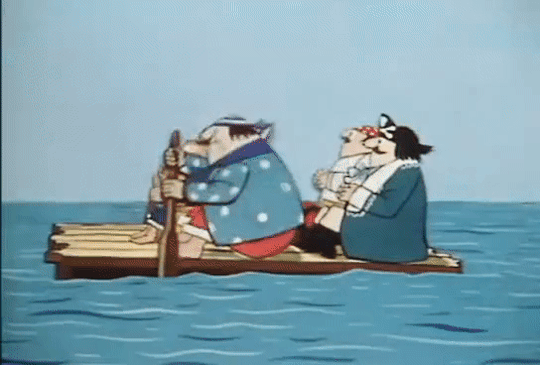
Captain Pugwash creator John Ryan was born on March 4th 1921 in Edinburgh.
Born as John Gerald Christopher Ryan in Rintoul Place, he was the youngest of four sons of the diplomat Sir Andrew Ryan KBE CMG, who served as consul-general to Morocco and was later British minister at Jeddah and in Albania. His uncle was the Archbishop of Trinidad. and Tobago Ryan spent his early years in Turkey and Morocco before returning to Britain, where he was educated at Ampleforth College Boarding school. His first cartoon was in the school magazine when he was just 9.
During the Second World War he served in the Lincolnshire Regiment in Burma and India, achieving the rank of captain. After being demobbed he studied art at the Regent Street Polytechnic, London.
He then worked as assistant art master (and later art master) at Harrow School, during this period Ryan began contributing strips to children’s comics such as the Eagle, Girl and Swift.
His best-known creation, Captain Horatio Pugwash – skipper of the Black Pig and “the bravest, most handsome pirate of the Seven Seas” – first appeared in the launch issue of the Eagle on 14 April 1950. Set in the 18th century, the strip’s full title was “Captain Pugwash, the Story of a Bad Buccaneer and of the Many Sticky Ends which Nearly Befell Him”. The portly, cowardly and conceited Pugwash, with his moustache and goatee beard and skull-and-crossbones hat, would frequently utter cries such as “Dolloping doubloons!”, “Kipper me capstans!” and “Coddling catfish!” The red-and-black striped shirt which he wore under his blue frockcoat was inspired by Ampleforth College’s football team’s colours. His arch-enemy and main rival in the quest for treasure was Cut-Throat Jake, captain of the Flying Dustman.
I think I should point out, and maybe spoil some peoples memories about Captain Pugwash, there was no Master Bates, Seaman Staines or Roger the Cabin Boy, they are urban myths, it was Tom the Cabin Boy and Pirate Willy, entirely innocent names, the other names are thought to have originated back in the 1970’s in student rag mags, the smutty names, according to Ryan’s father had an upsetting affect on her dad, who she describes as “a very charming and innocent man” The family had to sue some publications after her father’s death when some papers printed the fake names. The family gave money they were awarded to lifeboat charities.
Another series Ryan created, and one I certainly remember when growing u, was Mary, Mungo and Midge. John Ryan also drew topical cartoons for the Catholic Herald for more than 40 years and was the author and illustrator of more than 50 books.
He passed away in July 2009.
13 notes
·
View notes
Text
The Ultimate Guide to Umrah Visa: Everything You Need to Know
If you're planning to embark on a sacred journey to perform Umrah in Saudi Arabia, one of the foremost things you need to know is the Umrah visa requirements. Obtaining a Umrah visa is a crucial step in making your pilgrimage a reality. In this comprehensive guide, we will provide you with all the essential information about Umrah visas, including the application process, required documents, fees, and important tips to ensure a smooth application experience. So, let's dive in!
Visa Requirements for Umrah in Saudi Arabia
Before applying for an Umrah visa, it's important to be aware of the basic requirements set by the Saudi authorities. Here are the general prerequisites for obtaining a Umrah visa:
1. Valid passport: Your passport must be valid for at least six months from the date of your intended departure for Umrah. Make sure your passport has enough blank pages for visa stickers.
2. Return ticket: You must have a confirmed return ticket.
3. Vaccination certificate: You need to provide a vaccination certificate for meningitis, as required by the Saudi Ministry of Health.
4. Proof of relationship: If you are a female under the age of 45, you must be accompanied by a Mahram (a close male relative) during your journey. The proof of relationship, such as a marriage certificate or birth certificate, should be submitted along with the visa application.
Documents Needed for Umrah Visa Application
To complete your Umrah visa application, you will need the following documents:
1. Completed Umrah visa application form: This form can be obtained from the Saudi Arabian Embassy or Consulate in your country or online through their official website.
2. Passport-sized photographs: Attach two recent passport-sized photographs with a white background to your visa application.
3. Passport copy: Attach a clear copy of the information page of your passport, including your personal details and photograph.
4. Confirmation of hotel bookings: Provide a copy of your confirmed hotel bookings in Makkah and Madinah for the duration of your stay.
5. Non-refundable flight reservation: Submit a copy of your flight reservation or ticket showing your itinerary for Saudi Arabia.
6. Vaccination certificate: Include a copy of your vaccination certificate for meningitis.
7. Relationship proof documents: If you are a female traveler under the age of 45, provide the necessary documentation to prove your relationship with your Mahram.
Process of Applying for Umrah Visa from India
If you are an Indian national wishing to apply for an Umrah visa, follow these steps:
1. Choose an authorized Umrah agent: Select a reliable and authorized Umrah agent approved by the Saudi Arabian Embassy or Consulate in India. They will guide you through the visa application process and assist you with the required documentation.
2. Complete the application form: Fill out the Umrah visa application form accurately and legibly. Make sure to provide all the necessary details and attach the required documents mentioned above.
3. Submission through the agent: Submit your completed application form and supporting documents to your chosen Umrah agent. They will review your application, make any necessary corrections, and submit it on your behalf to the Saudi Arabian Embassy or Consulate.
4. Application processing time: The processing time for Umrah visas can vary, but it usually takes around 3 to 5 working days. The embassy will review your application, verify the documents, and issue the visa if everything is in order.
5. Collecting the visa: Once your Umrah visa is approved, your agent will notify you. You can then collect your visa from the agency or have it sent to you through a courier service.
Seamless Online Umrah Visa Application
To streamline the visa application process, the Saudi government has introduced an online portal for Umrah visa applications. This online system has made it more convenient for applicants to submit their documents and track the status of their application. Follow these steps for an online Umrah visa application:
1. Visit the official e-portal: Go to the official website of the Saudi Ministry of Hajj and Umrah and navigate to the "Umrah" section.
2. Create an account: Register your personal information and create an account on the portal.
3. Fill out the application form: Provide all the required details in the online application form. Make sure to enter your information accurately, as any discrepancies may lead to delays or rejection.
4. Upload supporting documents: Scan and upload all the necessary documents, including your passport copy, flight reservation, hotel bookings, and vaccination certificate.
5. Pay the visa fee: Make the payment for the Umrah visa fee through the online payment gateway provided on the portal.
6. Submit the application: After completing all the necessary steps, submit your application online.
7. Track the application status: You can monitor the progress of your application by logging into your online account. The portal will provide updates on the status of your visa application.
8. Collecting the visa: Once your Umrah visa is approved, you can either download it from the portal or collect it from the designated visa collection center.
Umrah Visa Fees and Payment Methods
The Umrah visa fee varies depending on whether it is your first-time or repeat visit, and it is subject to change. It is advisable to check the current visa fee at the time of your application. The payment methods for the Umrah visa fee include:
Online payment: If applying through the online portal, you can make the payment using a debit or credit card.
Payment through an authorized agent: If applying through an Umrah agent, you can pay the visa fee directly to them as per their specified payment methods.
Important Information for Umrah Visa Applicants
Here are some crucial details you should keep in mind when applying for an Umrah visa:
The Umrah visa is valid only for a specific period, typically 30 days. You must complete your pilgrimage within this duration and return to your home country.
The Umrah visa does not allow for any side trips or visits to other cities or countries. You are expected to focus solely on your religious activities during your stay in Saudi Arabia.
It is important to abide by the rules and regulations set by the Saudi authorities during your pilgrimage. Non-compliance can result in penalties and legal consequences.
Understanding the Umrah Visa Validity and Duration
The validity and duration of the Umrah visa can vary based on several factors, such as the time of the year and the specific regulations set by the Saudi government. Here are some key points to understand:
Umrah visas are usually issued for a specific period, typically 30 days. This means you must complete your pilgrimage within this timeframe and return home.
The Umrah visa is typically valid for entry into Saudi Arabia within a set period, usually within the month specified on the visa. Make sure to plan your travel accordingly to utilize the visa within the specified period.
During the holy month of Ramadan, the Saudi government may extend the Umrah visa validity to allow visitors to perform Umrah during this special time. However, it is important to check the specific regulations and requirements for Umrah during Ramadan.
Tips for a Smooth Umrah Visa Application Process
To ensure a seamless experience while applying for your Umrah visa, consider the following tips:
Plan ahead: Start your visa application process well in advance to avoid any last-minute complications or delays. It is advisable to begin the process at least one to two months prior to your intended travel date.
Seek assistance from authorized agents: Consult authorized Umrah agents or travel agencies who are experienced in handling Umrah visa applications. They can guide you through the process, help you gather the required documents, and ensure smooth submission.
Double-check your documents: Before submitting your visa application, thoroughly review all the documents to ensure accuracy and completeness. Any errors or missing information may lead to rejection or delays.
Keep copies of all documents: Make copies of all the documents you submit for your Umrah visa application. These copies can serve as backups and can be helpful in case any issues arise during the process.
Common Mistakes to Avoid When Applying for Umrah Visa
To avoid potential delays or rejections, be mindful of the following common mistakes when applying for a Umrah visa:
Submission of incomplete application forms: Ensure that you fill out the application form accurately, providing all the necessary information. Incomplete forms may be rejected.
Incorrect or expired passports: Make sure your passport is valid for at least six months and has enough blank pages for the visa sticker. An expired passport or insufficient blank pages can lead to visa rejection.
Inadequate or unclear supporting documents: Provide clear and legible copies of all the required supporting documents. Unclear or incomplete documents can result in delays or visa rejection.
Non-compliance with visa validity rules: Be aware of the validity period mentioned on your Umrah visa and make sure to plan your travel accordingly. Failure to abide by the validity rules can lead to visa cancellation or penalties.
In conclusion, obtaining a Umrah visa is an essential step towards fulfilling your religious obligations. By understanding the visa requirements, following the correct application process, and avoiding common mistakes, you can ensure a smooth and hassle-free journey to perform Umrah in the blessed cities of Makkah and Madinah.
Remember to always consult authorized Umrah agents or travel agencies for the most up-to-date information and guidance on the Umrah visa application process. Plan ahead, gather all the necessary documents, and embark on your sacred pilgrimage with peace of mind.
Umrah visa check
Umrah visa
Umrah visa for Indian
Umrah packages from Bangalore 2023
Umrah visa from India
Umrah package from Bangalore
3 notes
·
View notes
Photo

It was a delightful and wow! atmosphere when the Director-General and CEO of National Institute for Hospitality and Tourism (NIHOTOUR), the Turakin Kebbi, Nura Sani Kangiwa visited the venue of the Tourism Operation Management training in Lagos despite his busy schedule. He admonished tour operators to uphold their importance in sustainable tourism development in Nigeria. He went further to say that he would never have forgiven himself if he had missed the second training. #anagooshoadventures #nihotour #natop #tourism #souvenir #nigeria #beninrepublic #tourguide #culture #education #uscitizen Ogun State Governor's Office wale idris ajibade hussein dehghan german national tourist office incredible india, ministry of tourism, india sustainable tourism india Pankaj Chandel Jeevan Verma Marcelo Barbosa Viojo 🗺 Nura Abba Rimi Olusola Samuel Owonikoko Nini Okey-Uche Henry Santiago Joyce Adewumi Tomiwa Idowu Mike Bloomberg Abdulkadir DBA,MBA,MSc,BSc. carrington fellowship of the united states consulate, lagos, nigeria Faridah sagaya Nura Kangiwa Nigerian Tourism Development Corporation Nigerian Embassy Greece Opunimi Akinkugbe Msafiri Travels Nigeria LNG Limited NTT Global Destinations Elizabeth TEA Agboola Heritage Bank Plc Sterling Bank Plc Abiola Adelana Ibom Air Lagos State Government Lagos State Tourism Arts and Culture (at Eko Hotel And Suites. Adetokunbo Ademola Street, Victoria Island Lagos.) https://www.instagram.com/p/CpCjAqgjcVt/?igshid=NGJjMDIxMWI=
#anagooshoadventures#nihotour#natop#tourism#souvenir#nigeria#beninrepublic#tourguide#culture#education#uscitizen
2 notes
·
View notes
Text
what are the important things to remember before doing Social media marketing?

1. Set clear goals: Before starting any social media marketing campaign, it’s essential to set clear objectives and goals. This will help you measure your progress and determine which strategies are working best.
2. Identify your target audience: It’s important to know who your audience is so that you can tailor your messages to them. Research their interests and figure out what platforms they use to ensure that you’re posting content that’s relevant and interesting to them.
3. Analyze data: Collecting data is important for any successful marketing campaign. Use analytics tools like Google Analytics to measure the success of your campaigns and identify areas for improvement.
4. Use visuals: Images, videos, GIFs and memes are a great way to engage with your followers and make your content more eye-catching. Make sure you use visuals that are relevant to your brand identity and message.
5. Stay active: Post regularly on all of your social media accounts, respond promptly to comments, engage in conversations with other users, share user-generated content, and don’t forget to thank people for the
6. Monitor performance: Track how well each post performs in terms of engagement rate, reach, impressions and clicks. This will help you refine your content strategy by posting more of what works and less of what doesn’t.ir interactions.
Visit Sorted | India's favorite eCommerce Agency for FREE CONSULATION CALL.
2 notes
·
View notes
Text

Our office can help you with this service concerning the Consulate General of India. Please call out office to schedule a consultation with our indian consulate services at: +1 408 422 8585 or email at: [email protected]
2 notes
·
View notes
Text
India has sent relief material to Turkey and Syria after the earthquakes
India on Tuesday dispatched the first batch of earthquake relief material to Turkey after a series of earthquakes shook the middle-eastern nation on Monday. India has also sent two teams of expert National Disaster Response Force (NDRF) search and rescue personnel with highly-skilled dog squad on an Indian Air Force (IAF) aircraft. This first consignment of relief material includes medical supplies, advanced drilling equipment, and other crucial tools that are needed to offer aid to the distressed people.
Deputy commandant NDRF, Deepak Talwar is the leader of the team from India to Turkey. "This team consists of 47 NDRF personnel and three senior officers to perform recovery and response work as per the United Nations guidelines. The team is going as per the composition prescribed by NDRF and accordingly, we are moving. Medical components are also there and so is paramedic staff," he said.
India's Humanitarian Assistance and Disaster Relief (HADR) capabilities in action. The 1st batch of earthquake relief material leaves for Turkey, along with NDRF search and rescue teams, specially trained dog squads, medical supplies, drilling machines and other necessary equipment” Arindam Bagchi, ministry of external affairs (MEA) spokesperson tweeted.
The PMO earlier said, "Medical teams are also being readied with trained doctors and paramedics with essential medicines. Relief material will be dispatched in coordination with the Turkish government and the Indian embassy in Ankara and Consulate General office in Istanbul," the PMO said.
As of now, the death toll in Turkey and Syria has crossed 4000 and more than 15000 people have been reported injured after the earthquakes.
For more international news in Hindi, subscribe to our newsletter.
#werindia#leading india news source#earthquake#turkey#Syria#Earthquakes in Turkey#world news#international news in hindi#international news
2 notes
·
View notes
Note
WITH THE MEME. theron with 1, 6, 7, 29, dominic with 11, 19 32
THERON

Does your character have siblings or family members in their age group? Which one are they closest with?
Theron's an only child for one, and possibly? His father doesn't have any siblings so he doesn't have any cousins on that side of the family, but I think his mother has some? so it's possibly he has some cousins around his age in India that he is just barely in contact with. No one he was particularly close to though (Out of anyone, Theron was closest to his father). probably just some cousins he saw every couple of years for a weekend or so.
and as for friends, uhhhhh he sees Dominic as a kind of brother figure. Not in a "you are actually my brother" kind of way, but in a like "You have been with me through a lot and i feel like i can trust you with anything" kinda way. which is clearly a good thing for him to believe and doesn't hurt him at all.
6/7. Does your character have recurring themes in their dreams/nightmares?
combining these two to save some space. Mmmmmaybe?? Theron dreams about his dad a lot though. Having dreams where his dad accepts him for being gay and on the flipside, having nightmares where his dad DOESN'T and bad stuff happens. Theron's dad was a very important person in Theron's life. and even though Theron knows his father's view on homosexuality (he was very vocal about not liking the Consul being a gay man) Theron still holds out hope that his dad would've accepted HIM. but he will never know that answer because his dad died before Theron had figured out his sexuality. and it really haunts Theron and his dreams.
29. What did your character dream of being or doing as a child? Did that dream come true?
Shadowhunters, sadly, don't have many options than going into the demon killing business. Killing demons is their job, and every shadowhunter child is put forth into this occupation. The only other option for Theron would be to become a Silent Brother (shadowhunter doctors, who have their eyes and mouths sealed shut with runes and also deal with shadowhunter funerals and births), or he could always be deruned and become a mundane. Which is painful and shameful process.
So yeah Theron from early childhood really wanted to be the best shadowhunter he could be, because he didn't have many other options. did he achieve that dream? possibly! He is considered one of the best shadowhunters in his generation (only second to dominic)
DOMINIC
11. In what situation was your character the most afraid they’ve ever been?
If i'm going to be completely honest it's the situation the he was in the prologue of Crushed Olive Branch. Imagine being 5 years old, not remembering anything except your mom, she's not there, AND you're in a place you've never been before. Terrifying. There are other part of his childhood that weren't GREAT but i wouldn't describe them as him being "afraid." sadly. Dominic doesn't really scare easily.
19. What is your character’s biggest relationship flaw? Has this flaw destroyed relationships for them before?
lol. lol. lol. If we're talking Academy age Dominic, honestly he's a big people pleaser. He WANTS people to like him, so he goes along with things most people say. He had a couple girlfriends in academy, none of them lasted very long tho (because of his repressed homosexuality or his severe people pleaser attitude, you decide). He eventually stopped trying to do the whole "Girlfriend" thing and just started having casual hookups.
if we're talking CURRENT Dominic, than this bitch is such a selfish asshole. He's not a people pleaser anymore, he's wants people to please HIM. He got such a fucking ego that he thinks everyone needs to conform to his ideals and worldview and that everything would be easier if people just listened to him. will that ruin relationships for him? well luckily i am making a comic about just that thing.
32. Describe a scenario in which your character feels most uncomfortable.
when things are not about him.
was very tempted to just leave it at that, but i should probably give a like. GENUINE answer.
Honestly i think Dominic is the most uncomfortable when he's receiving some pushback. He's very used to people just going along with what he says, that if someone gives him genuine pushback he doesn't totally know how to respond except by saying some shit about he knows best and all that shit. He's such a shitty dude man.
2 notes
·
View notes
Text
[ad_1] Vikram Misri, India’s current Foreign Secretary, will continue in his role well beyond his scheduled retirement, following an extension approved by the Appointments Committee of the Cabinet (ACC). Initially set to retire on November 30, 2024, Misri’s tenure has been extended until July 14, 2026, or until further notice. Misri took over as Foreign Secretary on July 15, 2024. A seasoned diplomat from the 1989 batch of the Indian Foreign Service, he has held a variety of significant positions both in India and abroad. His assignments in New Delhi include roles on the Pakistan desk and as part of the Prime Minister’s Office (PMO) staff, where he served as Private Secretary to Prime Ministers I.K. Gujral, Dr. Manmohan Singh, and Narendra Modi. Throughout his career, Misri has represented India internationally in countries across Europe, Asia, and North America. His overseas assignments have included postings in Brussels, Tunis, Islamabad, and Washington D.C., as well as roles as Deputy High Commissioner in Sri Lanka and Consul General in Munich. He served as Ambassador to Spain in 2014, Myanmar in 2016, and China from 2019 to 2021. Before his appointment as Foreign Secretary, Misri was the Deputy National Security Adviser for Strategic Affairs from January 2022 to June 2024. Click here for Latest Fact Checked News On NewsMobile WhatsApp Channel For viral videos and Latest trends subscribe to NewsMobile YouTube Channel and Follow us on Instagram [ad_2] Source link
0 notes
Text
[ad_1] Vikram Misri, India’s current Foreign Secretary, will continue in his role well beyond his scheduled retirement, following an extension approved by the Appointments Committee of the Cabinet (ACC). Initially set to retire on November 30, 2024, Misri’s tenure has been extended until July 14, 2026, or until further notice. Misri took over as Foreign Secretary on July 15, 2024. A seasoned diplomat from the 1989 batch of the Indian Foreign Service, he has held a variety of significant positions both in India and abroad. His assignments in New Delhi include roles on the Pakistan desk and as part of the Prime Minister’s Office (PMO) staff, where he served as Private Secretary to Prime Ministers I.K. Gujral, Dr. Manmohan Singh, and Narendra Modi. Throughout his career, Misri has represented India internationally in countries across Europe, Asia, and North America. His overseas assignments have included postings in Brussels, Tunis, Islamabad, and Washington D.C., as well as roles as Deputy High Commissioner in Sri Lanka and Consul General in Munich. He served as Ambassador to Spain in 2014, Myanmar in 2016, and China from 2019 to 2021. Before his appointment as Foreign Secretary, Misri was the Deputy National Security Adviser for Strategic Affairs from January 2022 to June 2024. Click here for Latest Fact Checked News On NewsMobile WhatsApp Channel For viral videos and Latest trends subscribe to NewsMobile YouTube Channel and Follow us on Instagram [ad_2] Source link
0 notes